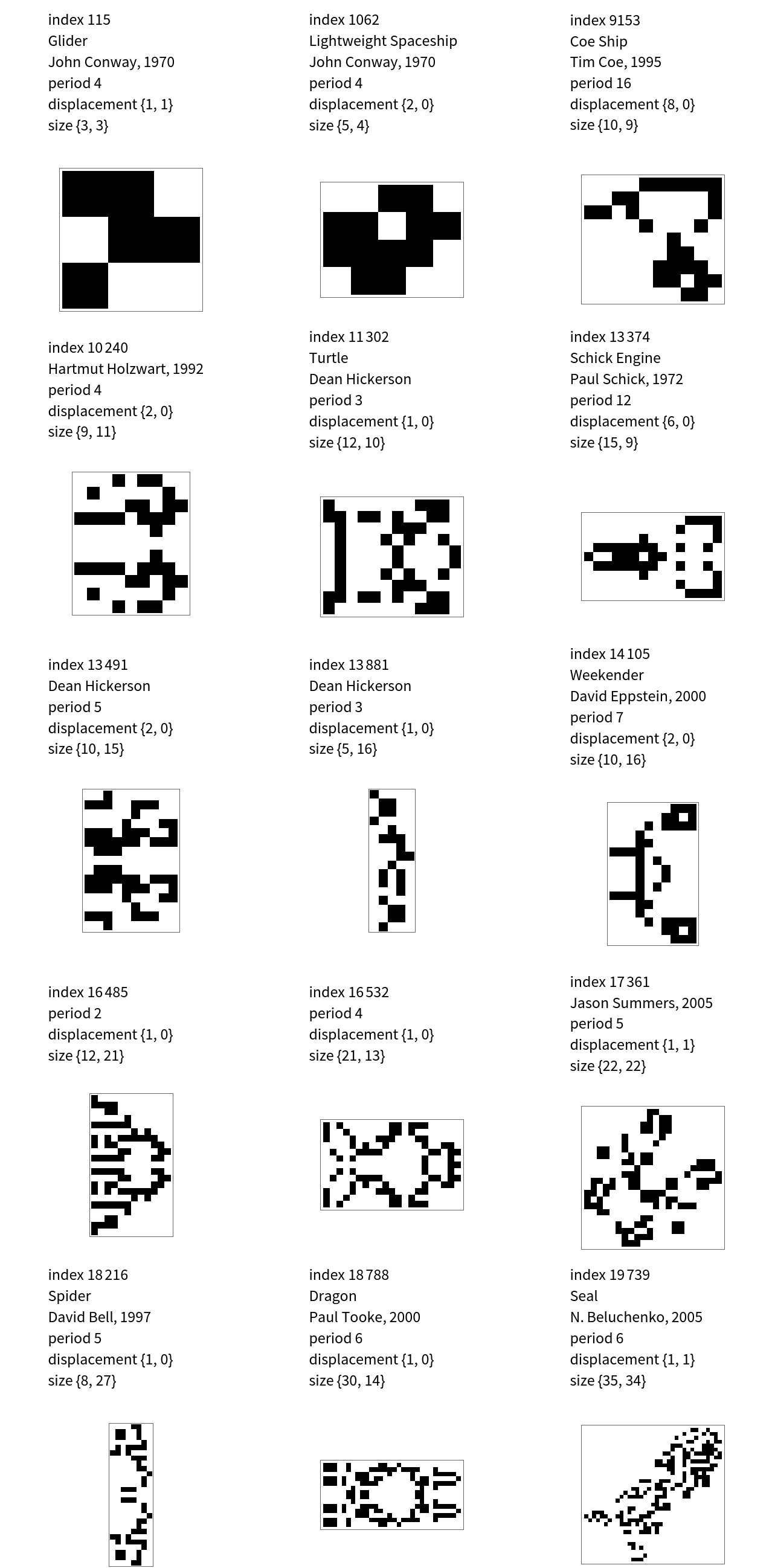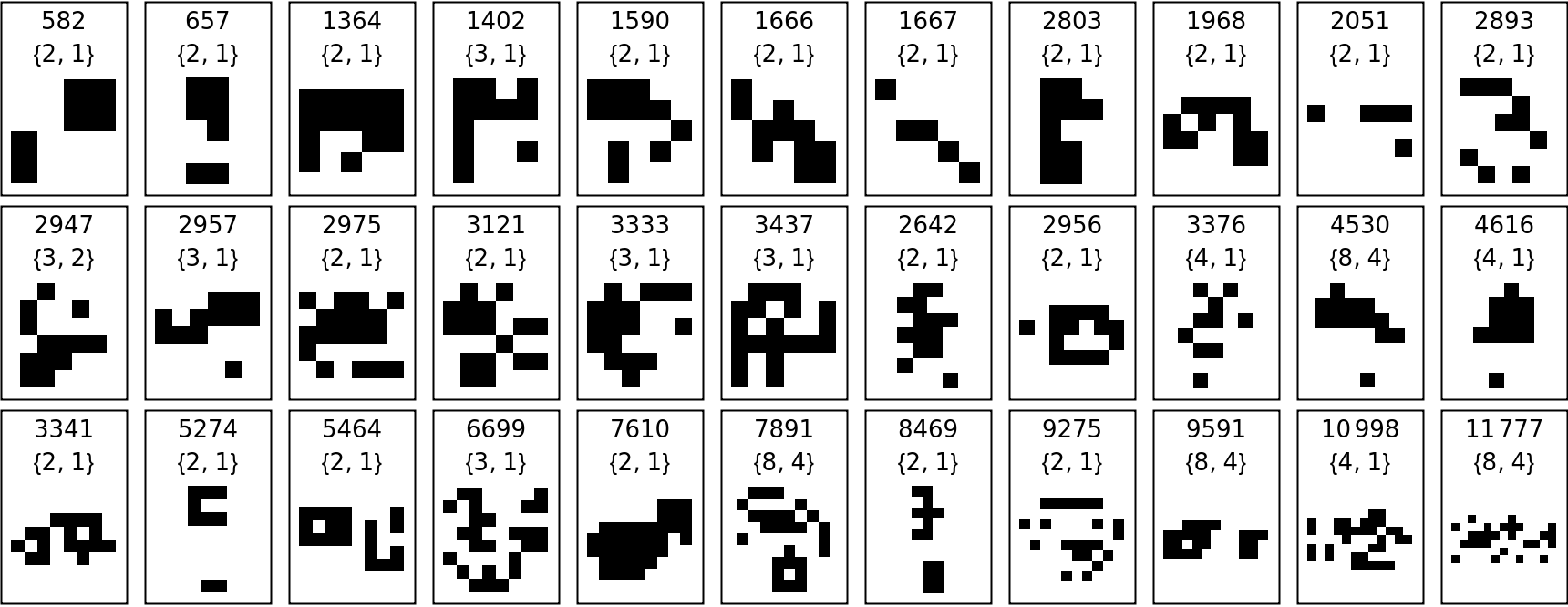Wolfram Data Repository
Immediate Computable Access to Curated Contributed Data
A 2D cellular automaton glider compilation by David Eppstein
Originator: David Eppstein
(21690 elements)
Show a glider with a very long period:
| In[1]:= |
| Out[1]= |  |
Show gliders that work in rule 224, the Game of Life:
| In[2]:= | ![With[{data = ResourceData["Gliders in 2D Cellular Automata"]}, Grid[Partition[Row[
{Column[
If[Head[#] === Missing, Sequence @@ {}, #] & /@ {Row[{"index ", #}], data[[#]]["GliderName"], data[[#]]["DiscoveryNotes"], Row[{"period ", data[[#]]["Period"]}], Row[{"displacement ", data[[#]]["Displacement"]}], Row[{"size ", data[[#]]["MinimumSize"]}]}], ArrayPlot[data[[#]]["GliderArray"], ImageSize -> {120, 120}]}] & /@ Take[{115, 1062, 9153, 10240, 11302, 13374, 13491, 13881, 14105, 16485, 16532, 17361, 18216, 18788, 19739, 21362}, 15], 3]]]](https://www.wolframcloud.com/obj/resourcesystem/images/3b4/3b4df66a-3d94-4bcd-a133-e0b5d0ae2d00/2ada7a33175324e3.png) |
| Out[2]= |  |
Show the index, displacement, and initial state of gliders that do not move orthogonally or diagonally, AKA the knight-gliders since they can move like a chess knight:
| In[3]:= | ![With[{data = ResourceData["Gliders in 2D Cellular Automata"]}, Grid[Partition[
Framed[Text@Column[#[[2]], Alignment -> Center]] & /@ Normal[{#["DatabaseIndex"], #["Displacement"], ArrayPlot[#["GliderArray"], ImageSize -> {60, 60}, Frame -> False]} & /@ SortBy[Select[
data, #["Displacement"][[1]] > #["Displacement"][[2]] > 0 && #["Period"] < 50 &], Max[#[["MinimumSize"]]] &]], 11]]]](https://www.wolframcloud.com/obj/resourcesystem/images/3b4/3b4df66a-3d94-4bcd-a133-e0b5d0ae2d00/28607713780f79e1.png) |
| Out[3]= |  |
Wolfram Research, "Gliders in 2D Cellular Automata" from the Wolfram Data Repository (2017) https://doi.org/10.24097/wolfram.01559.data